Hashtags are much more than just a way to make Tweets more entertaining. You’ve probably seen your fair share of random hashtags thrown into Tweets and Instagram posts that seem to serve no real purpose. But when used correctly, hashtags can be one of the most effective ways to track social media marketing campaigns.
When it comes to hashtag tracking, a lot of companies are in the dark. What hashtag should you use? How can you tell who’s using the hashtag? Where do you go to track everything? What do you even need hashtags for? Not to worry, we have you covered. We’ll break down everything you need to know about hashtag tracking and show you five easy-to-use techniques you can start implementing for your next social media marketing campaign.
The Purpose of Hashtags
Let’s start with the basics. At their most fundamental level, hashtags are a way of organizing content across social media. When you click on a hashtag on Twitter, Instagram, Google+ or any of the other popular social media sites that use them, you’re taken to a list of other posts that use that same hashtag. For instance, if you click on #cute, you’ll see all of the latest Instagram posts that contain that hashtag.
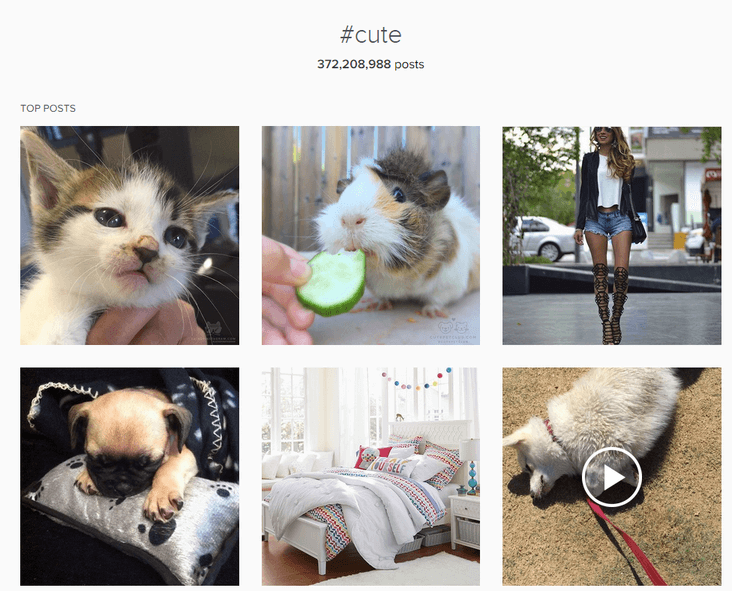
Here’s why marketers should care about hashtags, and why you need to track them. Your social media marketing efforts should have a purpose. Whether it’s to drive traffic to your blog, spread the word about a new product or just to bring awareness to your brand. Adding hashtags to your social media posts give you a way to connect specific posts to a certain campaign.
Let’s say you’re trying to build up some anticipation around a new product you’re about to release. Instead of sending out social media posts that just mention the product name, you could create a unique hashtag to track all of the conversations surrounding that product. To give a specific example, let’s consider the upcoming DC Comics movie “Suicide Squad.” In order to promote the movie, the studio created an official Twitter Profile. The bio specifically mentions the hashtag #SuicideSquad.
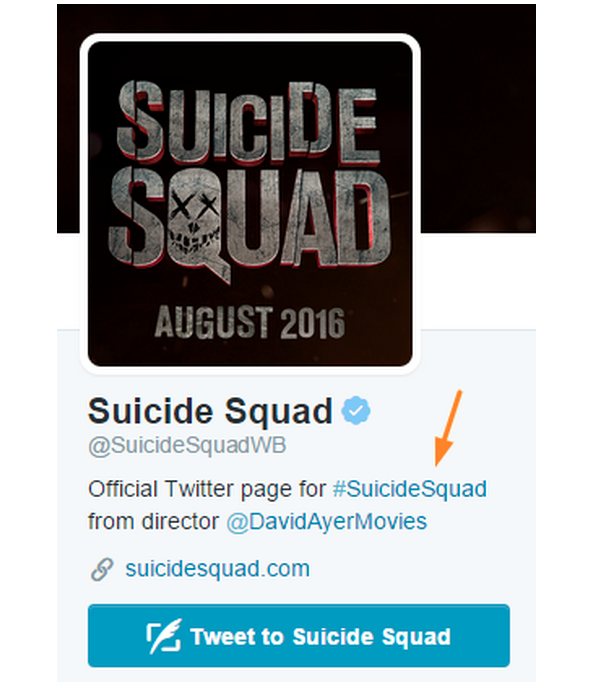
Now all the marketing department has to do to see the conversations around the movie is track that hashtag. Of course you should also be tracking the non-hashtag version, as well as your brand name. But the hashtag gives you an easy way to separate all of your different campaigns and get an immediate look at the conversation.
We’ll give you some examples and ideas of how you can use hashtags to track all types of social media marketing campaigns.
Choosing the Right Hashtag
The very first thing you’ll want to do is decide on what hashtag you want to use. Ideally every campaign you launch should use a unique hashtag so you can trace all conversations back to a specific project or goal. On the surface, choosing a hashtag might seem like a simple concept. But in order to give your hashtags the most visibility, keep these tips in mind.
Keep It Short
Long hashtags are difficult to memorize, which opens the door for people to make mistakes when typing them. If you’re using hashtags on Twitter, remember that users only get 140 characters. You want to leave room for people to be able to Tweet a full message in addition to your hashtag. A good goal is to keep your hashtags at around 16 characters or less.
Don’t Be Too General
The purpose of hashtag tracking is to be able to measure social media engagement for a particular campaign. When you’re using a hashtag that 20 other accounts are also using, it becomes a lot more difficult to track. For instance, if Nike was releasing a new shoe called the Cross Trainer, it might consider using #NikeCrossTrainer instead of just #CrossTrainer. Do a search to make sure nobody else is using the hashtag before making your decision.
Make It Conversational
This may not always be applicable, but when possible, choose a hashtag that encourages conversation and engagement. It’ll push people to share and interact. For instance, Dunkin’ Donuts started the #mydunkin hashtag where its fans share images of what they bought. Can you say free promotion?
Yep it's one of those days in New England that require @DunkinDonuts coolatta!!!

 #mydunkin #dunkindonuts
#mydunkin #dunkindonuts


 #mydunkin #dunkindonuts
#mydunkin #dunkindonuts 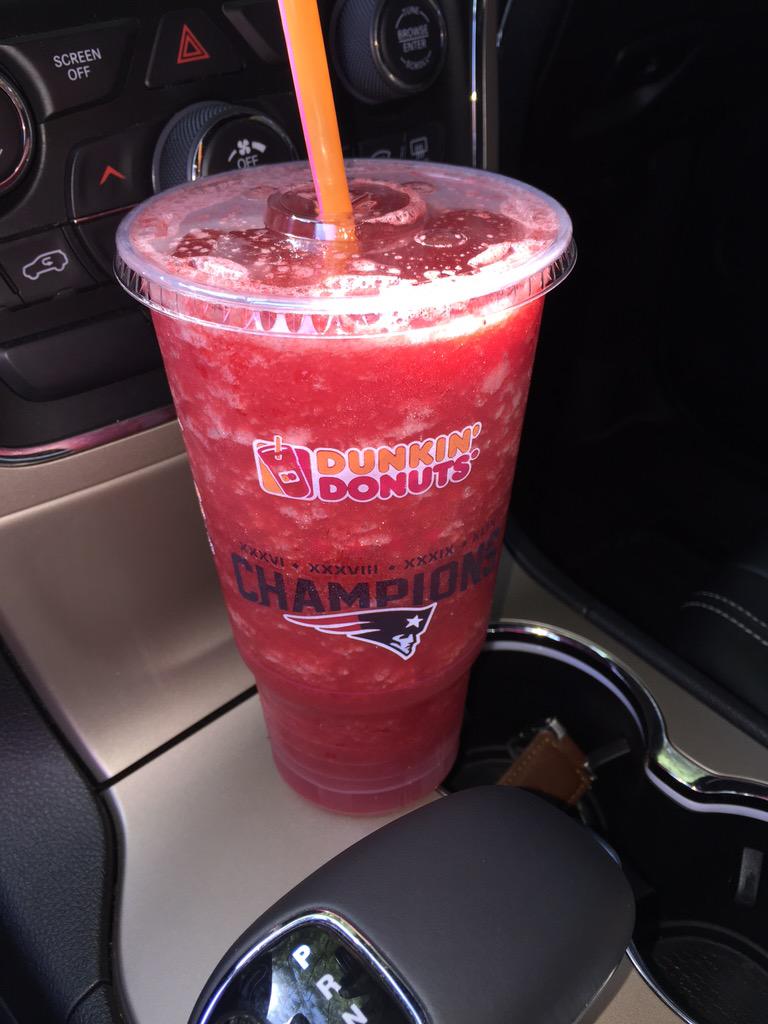
Double-Check the Spelling
You think you picked the perfect hashtag to track your campaign. It’s the right length, describes what you’re promoting and nobody else has used it. Then after someone Tweets you telling you to re-read your hashtag, you realize you made an embarrassing mistake. That’s what Susan Boyle’s PR team went through back in 2012. In order to promote the singer’s new album, they came up with the seemingly harmless hashtag of #Susanalbumparty. But when you re-read it, you can see where they went wrong. The lesson here is to always double check what your hashtag says.
5 Hashtag Tracking Methods
The tips above will make it much easier to track your hashtags and avoid potential problems down the line. If you need more tips for finding hashtags, check out this post. Now, let’s look at some specific techniques you can use for hashtag tracking.
1. Track Hashtags Associated With Your Brand
Sometimes hashtags will start to become associated with your brand without you even realizing it. You should always be tracking mentions of your brand on social media to see what your audience is saying, and to reply to any complaints or issues. But you can also take that a step further by analyzing what specific hashtags are being used when people mention you in Tweets using the Sprout Social Trends Report.
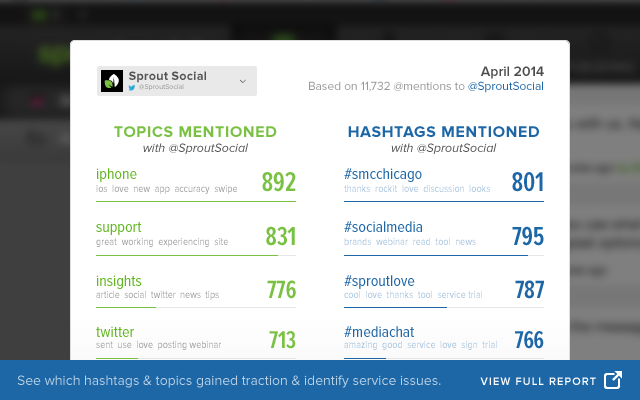
This handy report shows hashtags and topics that people frequently mention when they @Mention you on Twitter. Seeing what hashtags your company is associated with can spark ideas for new campaigns and give you a snapshot of how effective your custom hashtags are.
2. Track Offline Campaigns
Have you ever seen a commercial on TV that included a hashtag? Hashtags in commercials have become really popular over the last few years as hashtags have become more mainstream. Hashtags give marketers a way to effectively bridge the gap between offline and online marketing.
One of the most recent examples of companies using hashtags to track offline campaigns was during the 2015 Super Bowl. Even though the overall usage of hashtags in Super Bowl commercials dropped from 57% in 2014 to 50% in 2015, it’s still a very active trend. The hashtags gave companies like Lexus, Dove and Microsoft a chance to see how people reacted to their commercials in real time instead of having to wait until the next day or rely on other outlets to supply them with the information.
Start thinking of ways that you can use hashtags to track radio promos, events and other offline activities. It could be as simple as including a hashtag on flyers you hand out.
3. Track Real-Time Conversations
The beauty of social media is getting information in real time. Specifically when you look at a site like Twitter, which is heavily used as a way to stay on top of current topics. For instance, Apple recently held its highly anticipated Apple Event where the company unveiled its latest products. Thanks to hashtags, Apple, news outlets and blogs covering the event could see people’s reactions in real time.
Only thing better than a new iPhone? @OneRepublic playing the keynote event! My fav phone and favorite band, can't get better! #AppleEvent
This is particularly helpful when you’re launching a new product or service. Create a hashtag for the product, and have your team monitor social media to see conversations as they’re happening. You can easily respond to any issues and engage in conversations surrounding your launch.
4. Track Paid Ads
If you’re running Twitter Ads, it’s a good idea to incorporate a hashtag. Even though you may be measuring new email subscribers, click-through rate and conversions, you also want to consider the conversations people are having around your campaign. Including a hashtag in your Promoted Tweets lets you connect all mentions of your hashtag back to your ad.
Using the Apple example again, we can see that the App Store is using a Promoted Tweet for the new iPhone that Apple announced during the event using the hashtag #iPhone6s.
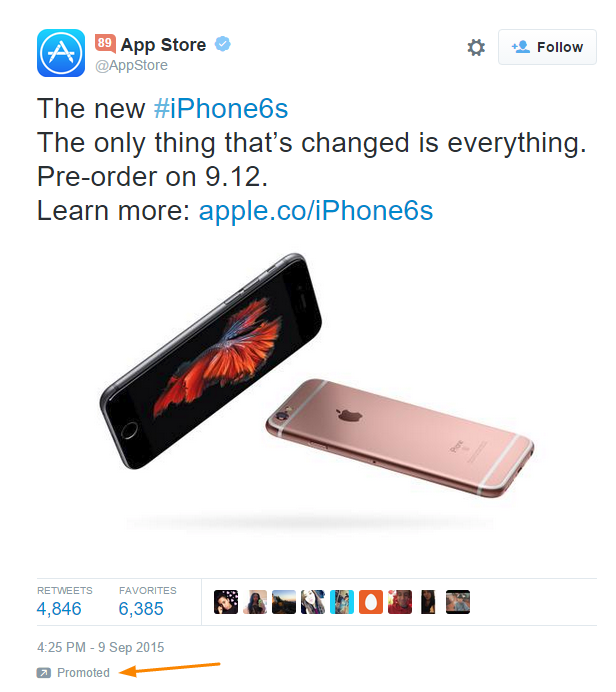
The ad includes a link back to its site, but Apple can also track mentions of its hashtag to see what type of organic reach it’s getting as a result of the ad. These are Tweets that aren’t replies to the Promoted Tweet, but still mention the hashtag.
Apple could have used a more targeted hashtag since a lot of people are naturally using #iPhone6s regardless of whether or not they saw the Promoted Tweet, but the concept is still the same. If you plan on running Twitter Ads, make sure you include a special hashtag to go along with it.
5. Track Contests
One of the most popular uses of hashtags on social social media is to track contests. Instagram contests are very popular right now and brands are using hashtags to keep track of contestant entries. You’ve probably seen the “use #contesthashtag to enter” posts. Here’s an example from Oldways Whole Grains Council.
In order to participate in the contest, people have to upload a picture and include#sharewholegrains in the caption. What this does is make it easy for Oldways Whole Grains Council to monitor all of the entries by tracking that hashtag.
Not only does it make it easy to track entries, but it also helps promote the contest organically because the participants’ followers will see the photo and hashtag, and they might join in too.
Start Tracking
Hashtag tracking doesn’t have to be intimidating. Hashtags are one of the best ways to organize content and track campaigns and conversations on social media. Start taking a more strategic approach with your hashtags and unlock their full potential.
To view the original article Click Here

 Caroline Kimani
Caroline Kimani




No comments:
Post a Comment